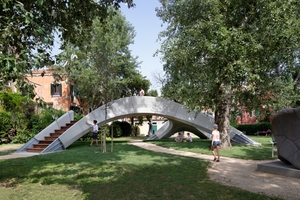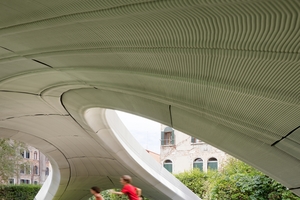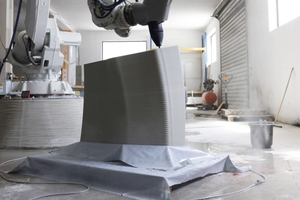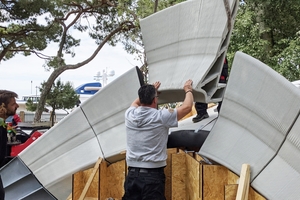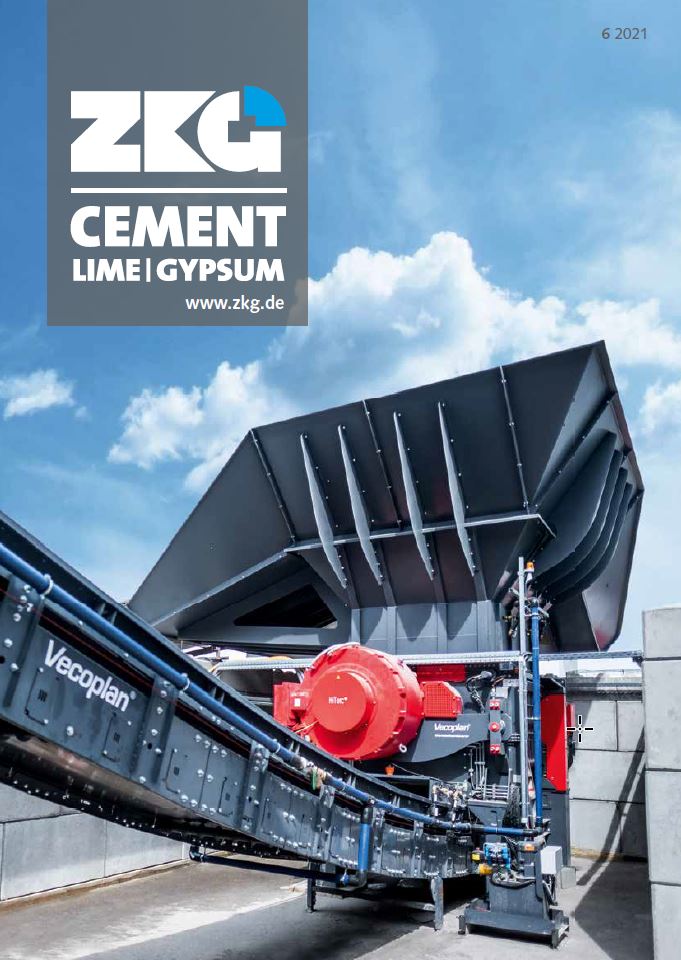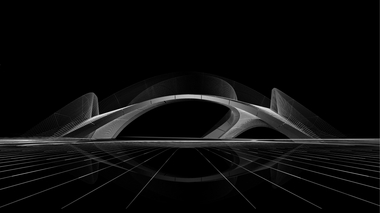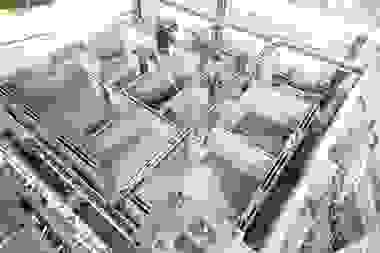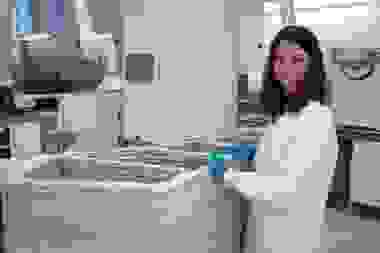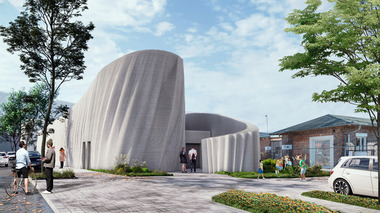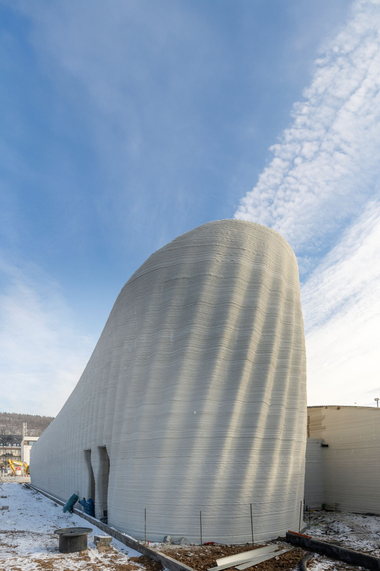Striatus unveiled: The first-of-its-kind 3D Concrete Printed bridge
July 19, 2021 marked the unveiling of Striatus in Venice, the first-of-its-kind 3D Concrete Printed bridge, designed by the Block Research Group and Zaha Hadid Architects, in collaboration with incremental3D and made possible by Holcim. Striatus establishes a new language for concrete that is digital, environmentally advanced and circular by design. The footbridge holds together through compression with no reinforcements, applying computational design and 3D printing, for minimal material use and maximum strength.
Philippe Block, co-director of the Block Research Group at ETH Zurich: “The name “Striatus” reflects the bridge’s structural logic and fabrication process. In arched and vaulted structures, material is placed in such a way that forces can travel to the supports in pure compression. Strength is created through geometry, using a fraction of the materials used in conventional concrete beams. This, furthermore, opens a breadth of opportunities to build with lower-strength and in a more ecologically friendly way.”
Shajay Bhooshan, Head of CODE, Zaha Hadid Architects’ Computation and Design research group: “Striatus stands on the shoulders of giants: it revives ancestral techniques of the past, taking the structural logic of the 1600s into the future with digital computation, engineering and robotic manufacturing technologies. Its tactile quality, aesthetics and strength reflect our principal partner Patrik Schumacher’s vision that beauty is a promise of performance.”
Johannes Megens, co-founder incremental3D: “Striatus represents the perfect synergy of architecture and engineering that comes together with printing technology and material innovation. The beauty of 3D Concrete Printing is the delicate layering and precision you can apply to reflect perfect geometry. Our collaborative work makes the Striatus bridge greater than the sum of each of its blocks.”
Jan Jenisch, CEO of Holcim: “Striatus was designed by some of the best architectural and creative minds in their fields. It demonstrates the infinite possibilities of 3D Concrete Printing to enable more sustainable, faster and effective building structures, without compromise on aesthetics and functionality. Its digital and circular design uses concrete at its best, with minimal material use and blocks that can be repeatedly reassembled and infinitely recycled.”
Striatus is a complex structure made possible by a specific, custom-made ink, from Holcim’s TectorPrint range, developed by its 3D Concrete Printing research team. It sets a blueprint to build for the future using advanced technologies from computational design to 3D Concrete Printing. The next generation of inks can include Holcim’s green building solutions, from its ECOPact green concrete to its ECOPlanet green cement, including recycled construction and demolition waste. Today, Holcim is working on a range of 3D Concrete Printing applications, from complex infrastructure to affordable housing. In Malawi, Holcim launched the world’s-first 3D concrete printed school, taking only 18 hours to build the walls and using 70% less materials than traditional building techniques. Holcim is also working with GE Renewable Energy and COBOD to 3D concrete print taller wind turbine towers on-site, doubling their height to harness stronger winds and capture 33% more renewable electricity at lower cost.
The bridge is now open to the public in the Marinaressa Gardens during the Venice Architecture Biennale until November 2021.

